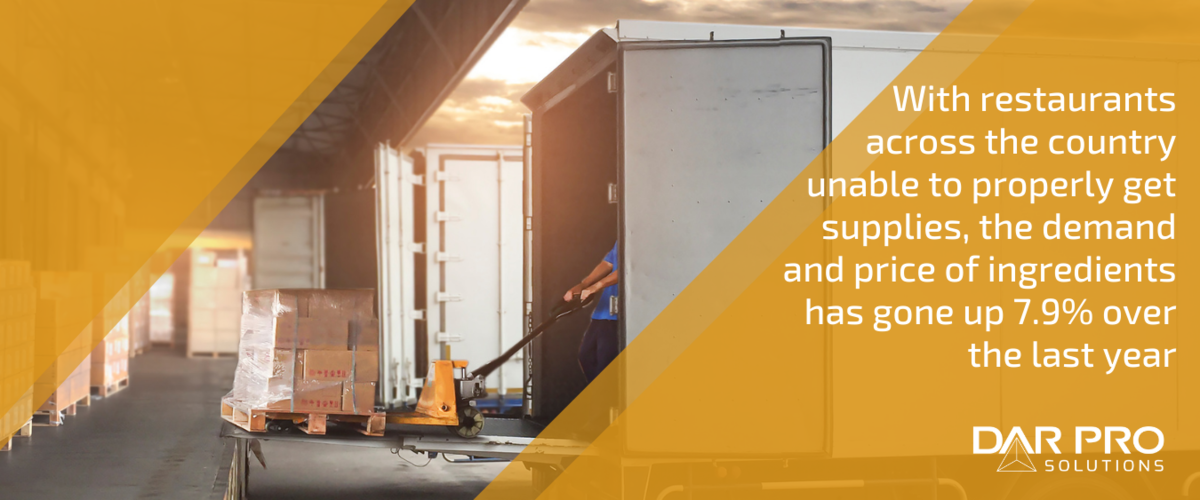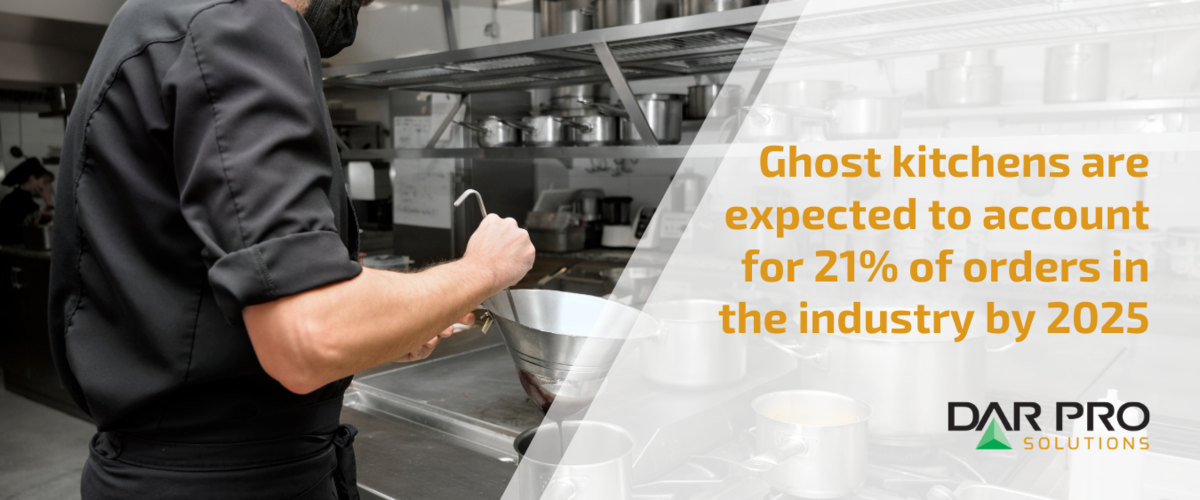Many so-called fads or things that seem trivial and minor are actually reflections of much larger cultural trends. This thinking can be said for the food industry—what restaurants are serving, what grocery stores stock, and what manufacturers produce depends mainly on what consumers buy.
They must reconcile this with what we can do food-wise with the labor available and environmental conditions. But as the seasons change and the years roll on, The food industry needs to adapt.
We’re here to discuss trends in the food industry that have taken hold—or will very soon.
Food Prices Remain High
The COVID-19 pandemic may be in the “rear-view mirror,” but restaurants are still feeling the effects years later.
The Restaurant and Food Group by Informa Connect conducted a nationwide survey asking restaurant owners about their businesses.
64% of owners felt that their restaurant’s overall business health is less than what it was in 2019. One big reason for that is the increasing cost of food. The test for the impact of inflation is called the burrito test. Burritos generally have ingredients from every sector of food production—vegetables, dairy, grains, and often meat. Therefore, the cost of making a burrito is directly related to the cost of ingredients.
But it’s not just ingredients. The cost of everything has gone up, including:
- Labor
- Utilities
- Equipment
- Supplies
Food items are costing more to create than they used to. 87% of restaurant owners have had to increase their menu prices to combat inflation.
Ordering From Local Suppliers
As commercial kitchens deal with supply chain delays and skyrocketing food costs, some businesses are ordering from local suppliers to get kitchen ingredients. Getting supplies from sources closer to the store reduces long delivery times and keeps those expensive ingredients fresher for longer.
Creating Seasonal and Limited Menus
Restaurants need to do their best to adapt to what they have in stock and available to make within their budget.
One way to account for menus becoming more condensed is rotating menu items. Instead of having 12 mainstays on the menu, choosing six or eight at a time and rotating the others throughout the year is helping restaurants make the most of what is available. Condensed menus also allow restaurants to more efficiently order ingredients. Cutting less popular menu items allows kitchens to order more of what sells better.

Labor Shortages May Continue…
In February 2020, just before the start of the pandemic, the number of restaurant workers in the United States was more than 650,000. It plummeted to a little more than 200,000 just 60 days later as businesses shuttered their doors.
Once things began to open back up, a labor shortage emerged that is still affecting the industry today. While staffing is back to only 3% lower than 2019, though 62% of owners say they can’t staff up enough. It has forced restaurants to operate with shorter hours and fewer days. When open, kitchen staff are spread thin and customer service has suffered as restaurants are trying to return to normal levels of production with fewer people.
Related Article: How to Deal With Restaurant Labor Shortages
…But Technology and Automation Are Here to Help
Restaurants have turned to technology and automation in commercial kitchens to try to account for the production gap and staffing shortage. One report found that 87 percent of restaurant operators have used or plan to use technology to make up for labor shortage.
Checkout kiosks and facial recognition for automated ordering are among many examples of how quick service restaurants are trying to optimize the ordering process with less manpower required. For example, White Castle uses Flippy 2, a fry-cook robot.
Other brands like Wing Snob are automating maintenance tasks like cooking oil recycling as another way to save time and money on labor costs while simultaneously shrinking the liability of handling hot used cooking oil.
Automated used cooking oil systems save you time and manpower. The experts at DAR PRO do the heavy lifting for installation and collection. Give us a call to determine the best system for your restaurant to keep your operations running smoothly.
Ordering and Reward Apps Are Gaining Popularity
In terms of technology use, we don’t just mean the digitized order kiosks at fast food restaurants (which will become more popular in the coming years) as a reaction to the need for contactless dining. Many fast food chains like Mcdonald’s and Dunkin’ Donuts have apps for mobile ordering and rewards programs. That’s not new. In the coming years, more and more restaurants will lean into smartphone accessibility for their customers.
Related Article: The Future of Contactless Dining | DAR PRO Solutions
Marketing Agency Movable Ink predicts that 54% of quick-serve restaurant sales will be digital by 2025. We anticipate they’ll use similar mobile platforms to order food, equipment, and more.
How consumers access food is going to mimic other digital areas of life. We pay a flat rate for TV and movie subscription services, monthly clothing boxes, and even subscribe to toilet paper deliveries. Why not for food? Restaurants are going to start experimenting with customers paying a monthly rate for specific numbers of meals.
Ghost Kitchens Are Here To Stay
With operational costs rising, many traditional brands as well as start-ups are utilizing ghost kitchen concepts to more efficiently get food to their consumers. A ghost kitchen is a large facility that rents out kitchen space to various brands. Think of it as a condensed kitchen with no dine-in area. The idea is to begin to streamline the process while cutting labor costs and maximizing space and production.
So, if your favorite wing place wants to enter a market without constructing a full-sized store, it can rent out a ghost kitchen space and offer a delivery option. A trend that was already on the rise pre-pandemic, ghost kitchens are expected to account for 21% of orders in the industry by 2025, according to one report.
Related Article: What Goes into Operating a Ghost Kitchen?

Customers are Defining “Value” Differently
Global consumer data from August 2022 asked consumers how they defined “value” in food and drinks. Many people previously thought of “value” regarding what we consume as the “most bang for your buck” or what costs less per ounce or unit. These days, it’s a little different.
The #1 Most Important Factor For Defining Value: Added Nutritional Benefits
57% of those surveyed said the best indicator of food value was the addition of nutritional benefits.
We’re paying more and more attention to not only what is going on in our bodies, but where we can get health benefits through nutrition rather than additional supplements.
Physically and mentally, proper nutrition is paramount. Consumers want more options that make it easier to optimize their mental and physical performance, at work and recreation.
It comes down to ease. Consumers are asking themselves, “how can I get everything I need to improve my focus, enhance my mental and physical well-being, and stay on budget?”
The #2 Most Important Factor For Defining Value: Made With Natural Ingredients
Natural ingredients were number two on this list. Support for plant-based ingredients and nutrition has skyrocketed in the last decade, especially within the past five years. According to the Restaurant and Food Group Survey, 64% of all adults are more likely to choose menu items that were raised locally and organically.

#3 Was “Is at a Lower Price Than Others”
Again, the perception of value directly related to price isn’t completely gone from consumers’ minds. How do restaurant owners give customers low prices while food costs are so high? While a lower price is important, price value is the perception of economic, functional, and psychological benefits in exchange for the product or service.
Essentially, are consumers getting their money’s worth? Are these added benefits pushing their food budget?
How DAR PRO Services Fit Future Trends
Speaking of sustainability and utilizing resources already available, used cooking oil from deep fryers can be refined and turned into renewable diesel.
That’s DAR PRO Solutions’ specialty. We’ll install your used cooking oil system and collect it based on your schedule. Employees no longer need to spend extra time performing a potentially hazardous task. DAR PRO will take care of everything concerning your used cooking oil.
There are plenty of things to keep up with to keep a business running, let alone trying to keep up with future trends. We can help you out when it comes to ease and sustainability. 72% of adults are more likely to choose restaurants with environmentally friendly business practices. Make sure you’re one of those restaurants.
Reach out today, and stay on top of the trends.
DAR PRO Solutions provides used cooking oil recycling and grease trap maintenance service to restaurants across the country. Our program and used cooking oil storage tanks make kitchens safer and more efficient. Reach out to a DAR PRO representative today and find out how your business can benefit from our program. Call us 24/7/365 at 855-DAR-PRO1 (855-327-7761).
Contact Sales
For customer service inquiries call our toll free number (855) 327-7761
By submitting this form I agree to the privacy policy including the usage of contact details to contact me for marketing purposes.
